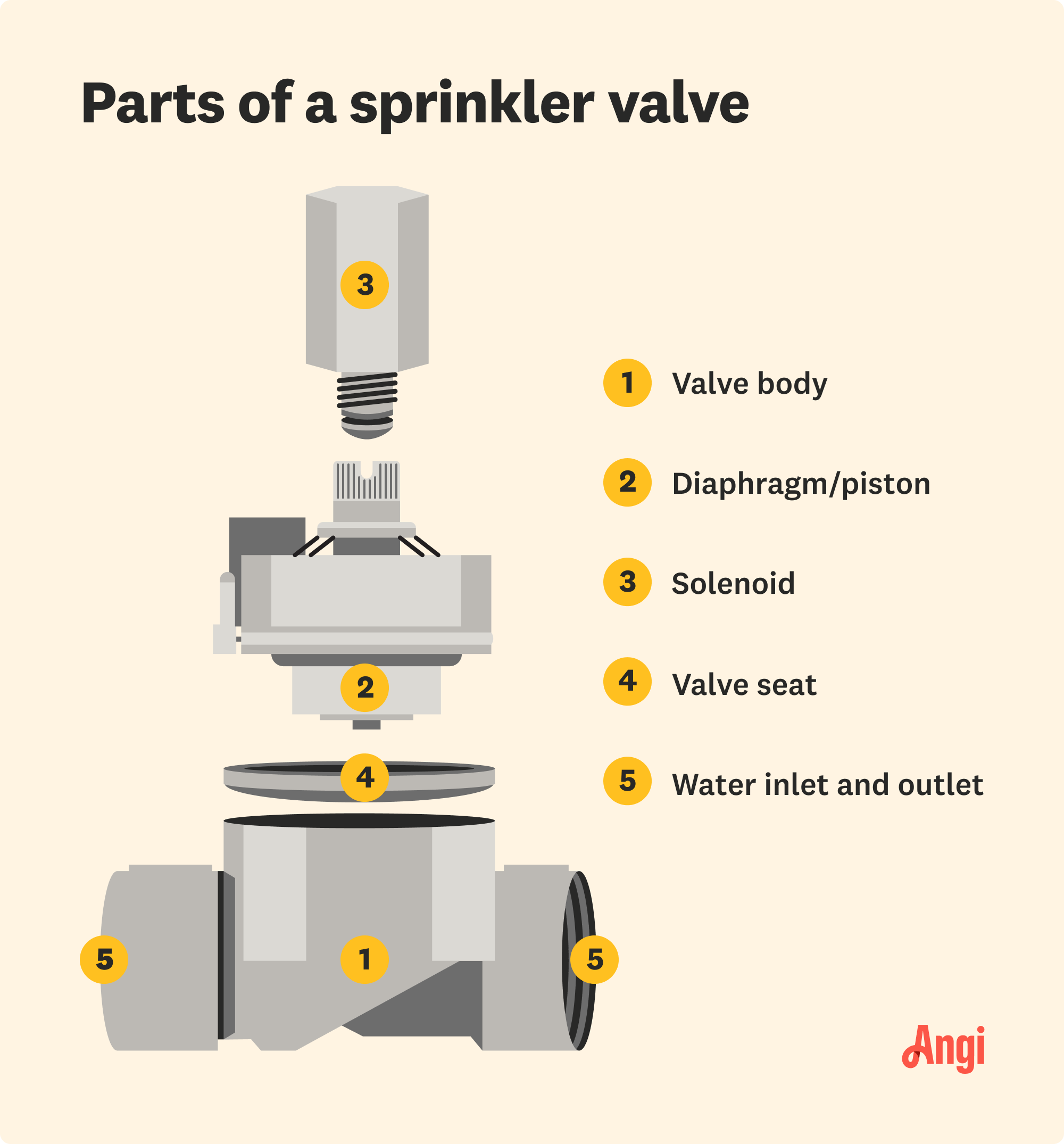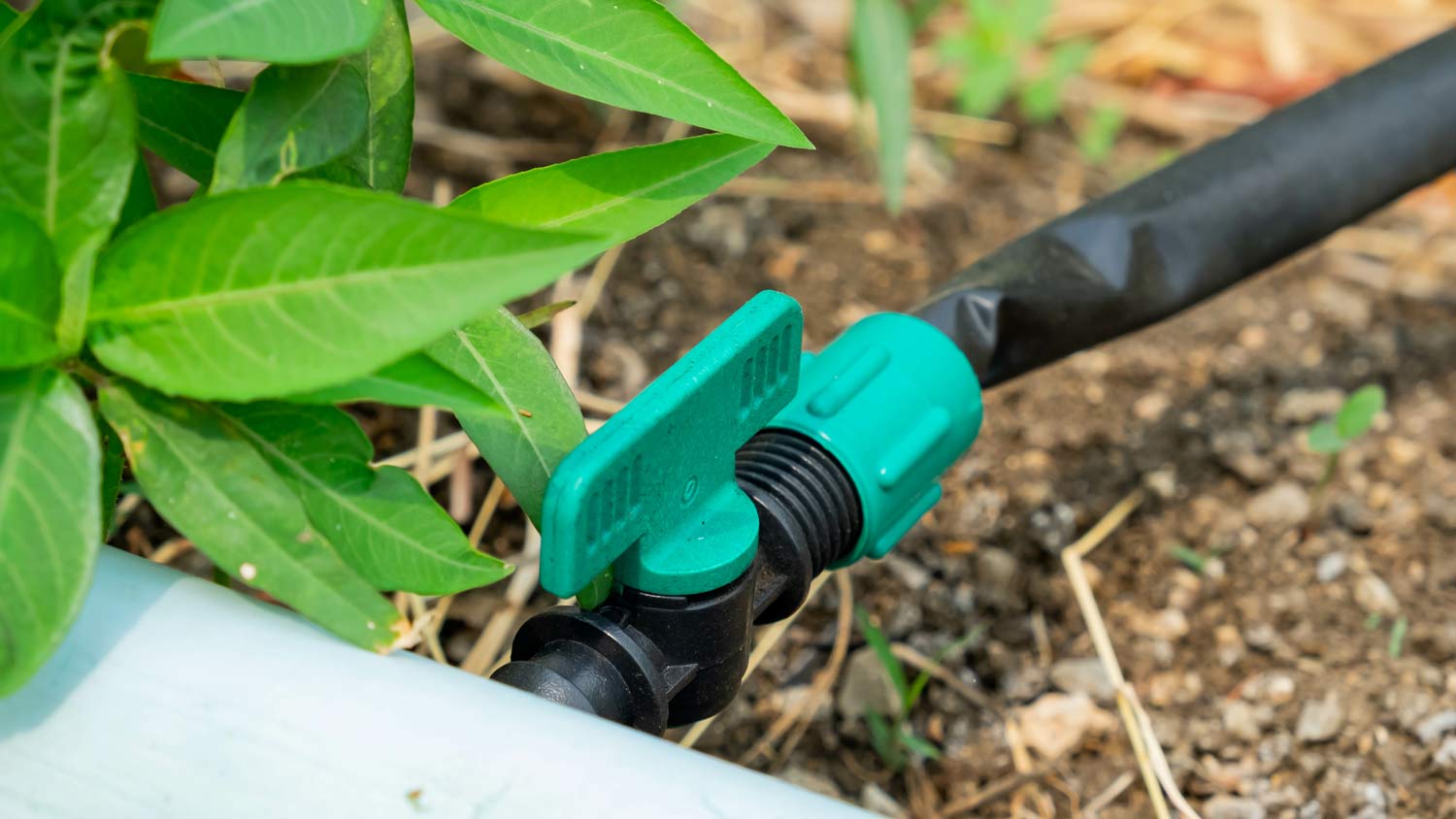
A French drain costs around $9,250 to install, but several factors will determine the final price you pay. Learn the cost to install French drains in this guide.
Excellent lawn care starts with proper water flow


A sprinkler valve’s main purpose is to control water flow to different lawn zones.
The diaphragm and solenoid are responsible for opening and closing the valve.
Common issues in sprinkler valves include leakage and failure to open or close.
Sprinkler systems have revolutionized the way we irrigate lawns, gardens, and crops. At the heart of these systems lie sprinkler valves, which play a pivotal role in controlling the flow of water to various zones. But how does a sprinkler valve work to keep your lawn or garden in top shape? And how can you ensure it stays functional? Whether you're a seasoned gardener or a homeowner looking to enhance your landscaping, understanding how sprinkler valves work is essential.

A typical sprinkler valve comprises several key parts that work in harmony to regulate water flow. Understanding these components is crucial for grasping the valve's operation.
Also known as the “valve box,” the valve body houses the essential components of the sprinkler valve. Basically, it provides structural support and protection.
The diaphragm (or piston) is the heart of the valve and is responsible for opening and closing the valve in response to control signals.
An electromagnetic coil, the solenoid controls the diaphragm's movement. When activated, it allows water to flow through the valve.
The valve seat is a sealing surface that prevents water from escaping when the valve is closed.
These are the points through which water enters and exits the sprinkler valve. Proper alignment and sealing of these ports are crucial for the valve's operation.
The operation of a sprinkler valve can be divided into three main actions: opening the valve, closing the valve, and controlling water flow. Let's explore each of these actions in detail.
When an electric current is applied to the solenoid, it creates a magnetic field that lifts the solenoid plunger, allowing water to flow from the inlet to the outlet.
A spring mechanism or hydraulic pressure pushes the diaphragm or piston back into its closed position when the current to the solenoid is interrupted. This effectively closes the sprinkler valve and stops the water flow.
The amount of water flowing through the valve is determined by the position of the diaphragm or piston. Partial opening allows for controlled water flow rates.

Sprinkler valves come in different varieties to suit various applications. The three primary types are manual valves, electric valves, and hydraulic valves. Each type serves a specific purpose, offering distinct advantages in different scenarios.
Manual valves: Operated by hand, these valves are best for smaller irrigation systems.
Electric valves: These valves operate electronically and allow for precise and automated water scheduling.
Hydraulic valves: Often used in larger agricultural settings, hydraulic valves rely on liquid pressure to open and close. They’re great for high-flow applications.
If you have any of these common sprinkler problems, here’s how you can start troubleshooting:
Leakage: Check for leaks around the valve body, diaphragm, or solenoid. Leaks can waste water and damage your system.
Valve won't open: If the valve fails to open, inspect the solenoid for damage or debris blockage.
Valve won't close: A valve that remains open could have a damaged diaphragm or debris preventing closure.
Don't neglect your sprinkler system maintenance, such as annual cleanings and inspections. These upkeep tasks can help prevent costly issues like clogged pumps and leaking pipes.
To keep your sprinkler system in good working condition, regularly clean and inspect your sprinkler valves. Remove any debris, sediment, or mineral buildup that can affect their performance. If you encounter complex issues, consider seeking professional help to avoid further damage and having to fully replace your sprinkler valve.
Deciding whether to install your sprinkler system yourself or hire a professional depends on your expertise and the complexity of the project. DIY installations can save money, but they may be more time-consuming and require a deeper understanding of irrigation systems.
If you’re unsure about your ability to install or repair a sprinkler valve, enlist the help of a local sprinkler company. They can offer expertise and guarantee optimal performance of your sprinkler system.
From average costs to expert advice, get all the answers you need to get your job done.

A French drain costs around $9,250 to install, but several factors will determine the final price you pay. Learn the cost to install French drains in this guide.

Discover drip irrigation system cost estimates, key price factors, and ways to save. Get transparent pricing to plan your home irrigation project confidently.

If your sprinkler system isn’t working, it may be time for a new pump. Find out sprinkler pump replacement costs with this guide.

Putting your sprinkler system to bed for winter will help avoid damage from freezing temperatures. Use this guide to winterize your sprinkler system.

A lawn sprinkler can make light work of watering your yard. Find out how much a sprinkler system installation costs based on lawn size, system type, and other factors.

Lawn irrigation system issues can be frustrating, especially if it’s running up your water bills. Here are seven sprinkler problems to troubleshoot.